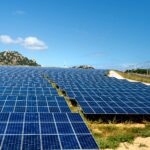As the effects of climate change become more apparent, Australians are turning to lower-emission vehicles as a means of reducing their individual carbon footprint. Electric vehicle deliveries are up by 334 per cent year-on-year, with no sign of slowing down, especially as budget-friendly options expand across the nation. Now that Tesla is a household name, brands like BYD are catching on.
Electric vehicles are cheaper to run, produce lower emissions and are supported by convenient charging options. The combination of these factors is pushing both consumers and the government to pick zero emission vehicles. In Queensland, the organisation supporting this change across the government fleet of vehicles is QFleet.
Articulous has worked alongside QFleet at multiple Energy and Jobs Fairs, as well as at regional shows across Queensland as part of the effort to promote electric vehicles and educate local residents. With help from the Department of Energy and Public Works, QFleet has been able to educate the public about their fleet of zero emission vehicles, and even give joy rides around the streets of Townsville!
Recently, we had the chance to speak with Damian Plumb, the Director of Fleet Operations at QFleet about his experiences:
Can you start off by describing your role at QFleet and how you found yourself in the sustainable vehicle industry?
As the Director of Fleet Operations, I lead the teams responsible for the customer facing activities of QFleet. This is a challenging role given that QFleet lease approximately 10,500 vehicles of all shapes, types and sizes to Queensland Government departments across the state.
Since 2018, QFleet has been gradually transitioning its passenger and SUV fleet from petrol and diesel to zero emission vehicles where it is practical to do so. These efforts have been accelerated from early 2022 with the introduction of the Queensland Government’s Zero Emission Vehicle Strategy 2022 – 2032. Under this strategy, all eligible passenger vehicles and SUVs will transition to a zero emission vehicle by the end of 2026. This transition is expected to involve close to 4,000 vehicles by the end of 2026.
What is Qfleet and how did the organisation come about? How long has Qfleet been operating?
QFleet is the Queensland Government’s fleet management entity, which owns and leases approximately 10,500 vehicles to government agencies and related bodies across the state.
In March 1991, the then State Government conducted a review into how various departments were separately managing their vehicle assets.
The review recommended a centralised fleet manager be created to better manage government vehicle assets. It was thought that this would better mitigate risks for government and provide better value for money for the taxpayer.
As a result, QFleet commenced official operations on 1 July 1991 as a commercialised business unit. We now been running smoothly for the last 32 years!
What services do Qfleet offer to people looking to transition to an electric vehicle or using sustainable travel options?
QFleet focuses on providing fleet asset management services to Queensland Government departments and related bodies. The rules governing QFleet’s operation dictate leasing services cannot be offered to any entities or persons outside of Queensland Government departments or related entities.
Once Qfleet-leased vehicles reach the end of their life, they are sold by public auction through auctioneer, Manheim. There, they are available for purchase from both the public and motor vehicle dealers.
Recently, QFleet has started offering a limited number of second-hand electric vehicles for sale. It is expected that the volume of second electric vehicles made available will increase in the coming years. This will potentially helping families to transition to zero emission transport in a more affordable way.
How do hydrogen cars work? How would the average user maintain them?
QFleet is participating in a three-year trial with BOC, bp Australia, Hyundai and ARENA. As part of the trial, QFleet is leasing five Hyundai NEXO fuel cell electric vehicles (FCEVs) to test in real world conditions to understand the possible suitability of this technology in a fleet setting.

The Hyundai NEXOs are fuelled by compressed hydrogen gas. BOC are producing the hydrogen gas locally in Brisbane using renewable energy sources. This means that the Hydrogen used is green, which is preferred.
The cars themselves are an electric vehicle with a fuel cell in the engine bay. The simple explanation is the hydrogen gas (which is stored in 3 x 2kg tanks in the rear of the vehicle) mixes with air flowing into the vehicle as you drive. The reaction that occurs in the fuel cell between the hydrogen gas and air creates the energy to help drive the electric motors. The only emission from the vehicle is water vapour, making it a very clean and quiet driving experience.
The NEXO is a medium sized SUV which can seat five adults comfortably. The 6kgs of hydrogen enable approximately 650kms of driving range. This is similar to an equivalent medium sized petrol SUV.
In years to come, these types of vehicles could be quite useful provided there is sufficient refuelling infrastructure that is readily available.
The maintenance of a FCEV is relatively straight forward. The main focus is on ensuring that the fuel cell is operating at its optimum capacity. Currently, this can only be evaluated by Hyundai qualified mechanics at designated dealers. Unlike older cars of yesteryear, the fuel cells could not be maintained at home by a “backyard mechanic.”
There is a section on the QFleet website about reducing environment impacts while driving. When did this become a priority and what has the organisation accomplished since then?
QFleet has a long and proud history of environmental initiatives and encouraging environmentally friendly driving habits. In 1999, QFleet was the first fleet manger in Australia to introduce the Toyota Prius. The following year, we were the first government fleet manager to appoint an environmental manager.
Through various government initiatives in the years that followed (i.e. Climate Smart) QFleet has remained at the forefront of efforts to reduce transport emissions wherever possible, especially through efficient driving practices.
When QFleet selects vehicles for its fleet, the CO2 output of the vehicle is a key selection criteria. For example, QFleet’s first hybrids emitted 50 per cent less carbon dioxide and 90 per cent less carbon monoxide and hydrocarbons than similar-sized internal combustion engine vehicles (ICE) in 1999.
Over several years QFleet has continued to reduce the maximum tolerable level of CO2 output for vehicles in the fleet.
Recently, the Zero Emission Vehicle Strategy 2022-2032 was released. The strategy focuses on transitioning eligible passenger vehicles to zero emission vehicles through to the end of 2026. With the deliberate move toward zero emission vehicles, QFleet continues to provide drivers with information on how they can drive safety.
Where do you see electric vehicle use trending in the future?
The acceptance of electric vehicles as a viable transport option is growing quickly, which is exciting. A widening variety of electric vehicle vehicle manufacturers is also helping to make electric vehicle transport more feasible.
With the continual improvements in battery technology including increased driving range, vehicle to load and vehicle to grid capabilities and an increase in the coverage of charging infrastructure, the possible use cases for electric vehicles are expanding all the time.
Within the government, we are likely to see electric vehicles being used across the state delivering the full range of services conducted by the various departments. The next paradigm shift we are looking forward to is the mass introduction of viable light commercial electric vehicles. The transition to electric vehicles is expected to accelerate when this type of vehicle becomes more readily available.
The future looks bright for electric vehicles and QFleet looks forward to being at the forefront of the shift to EVs.
To learn more about QFleet, Hydrogen cars or to buy an ex-QFleet car for yourself, visit their website here.





